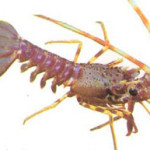
Echinometra and Echinothrix spp
Sea urchins are often used as indicator organisms in public aquariums to determine whether the system is functioning properly. These organisms are extremely sensitive to water conditions and are first to show signs of stress, seen when their spines are laid down or are shed.
Sea urchins (echinoderms) are a group of marine invertebrates that can be found in almost every major marine habitat from the poles to the equator and from the inter-tidal zone to depths of more than 5,000 metres. There are around 800 extant species and the group has a long and detailed fossil record stretching back many millions of years. All echinoderms have tubefeet and these play a very important role in feeding and respiration.
Echinoderms move by means of spines and climb and cling on to hard substrata by means of their tube-feet. The spines also offer the primary means of defence. Sea urchins feed in a variety of ways. They have a powerful internal jaw and graze on algae or sedentary organisms, thanks to a complex system of teeth known as the “lantern of Aristotle”, first described by the Greek philosopher himself, over 2000 years ago. Too much algae threatens corals. If the conditions are right for algae to grow, then the algae can grow over the reef if there aren’t enough algae grazers like the sea urchin to eat them. There needs to be a healthy abundance of algae eaters to keep the corals healthy.
The genus Echinometra contains is distributed throughout the tropical waters of the globe, and is the most numerous of tropical shallow-water echinoids. They are generally small bodied, with maximum sizes of 85 mm test (shell) diameter and may live 8 to 10 years. They form burrows and territories that are defended and are sometimes described as ‘rock boring urchins’. The species is the most effective herbivore and in the absence of predators can occur in densities that exceed the primary production potential The banded sea urchin (Echinothrix calamaris) is a large urchin with long, slender, needle-like banded light and dark green spines which can grow up to 15 cm diameter. Watch out for the venomous spines!
Warning! Some sea urchins are covered with sharp venom-filled spines that can easily penetrate and break off into the skin – even through a wetsuit. The DAN (Divers Alert Network) website contains useful information on how to handle the unfortunate effects of accidental brushes with these and other poisonous marine organisms. Check out www.diversalertnetwork.org for any information that you need.









Social Profiles